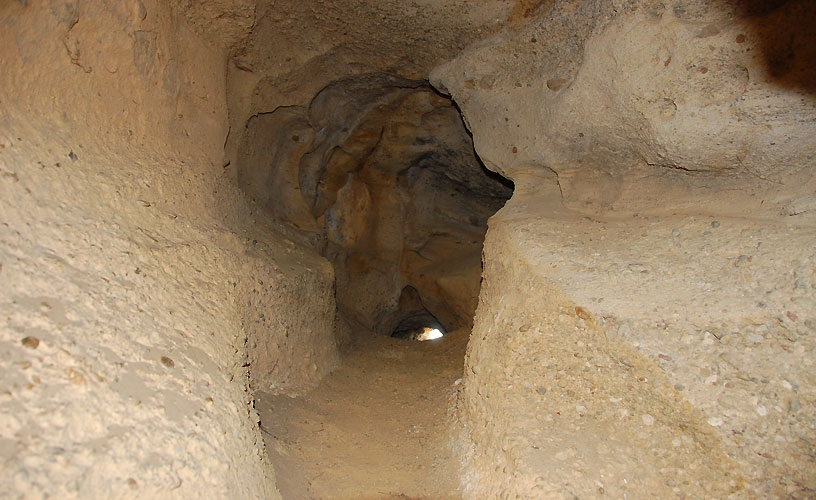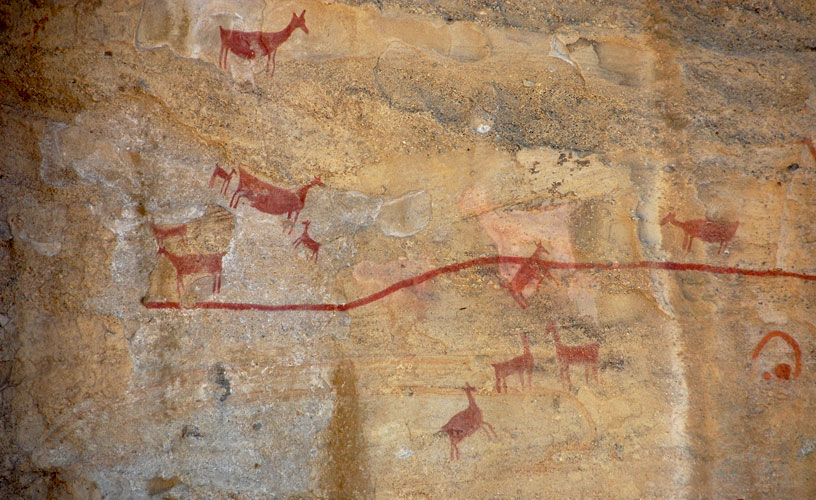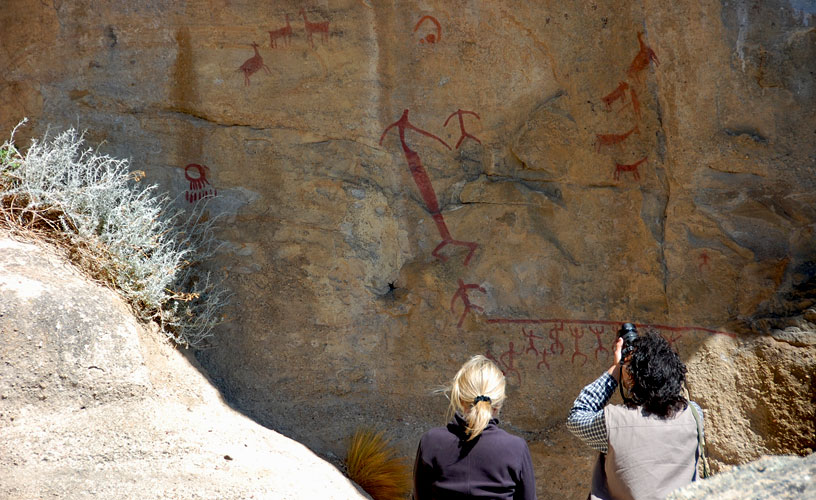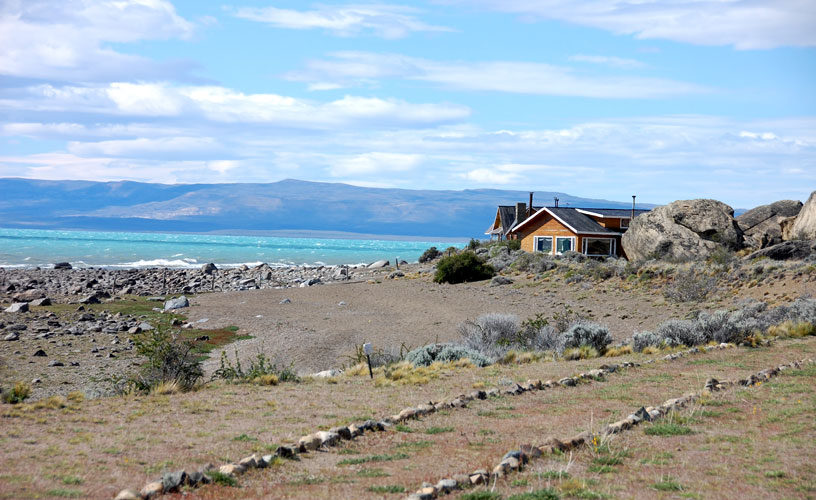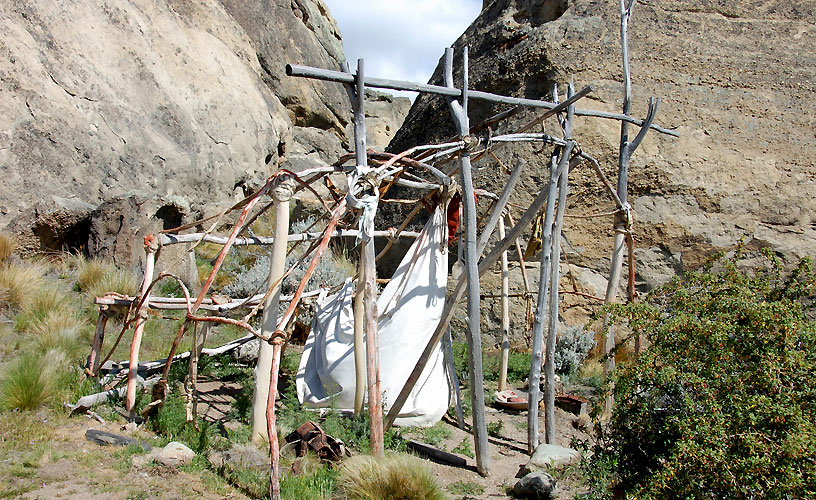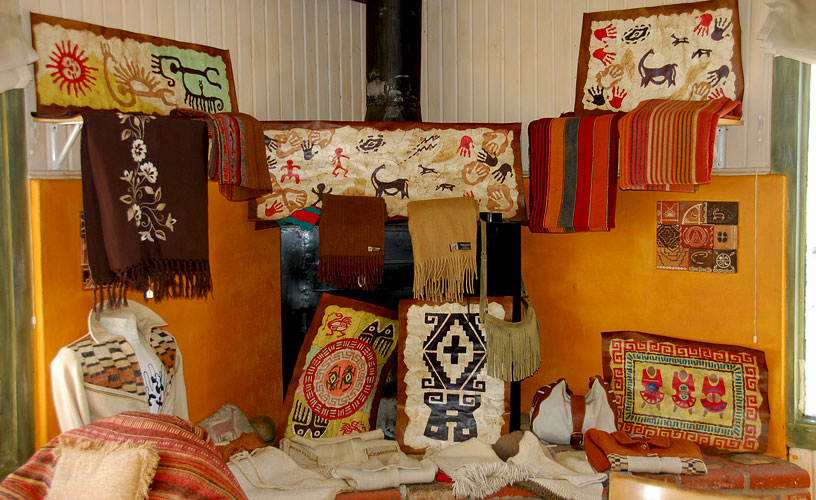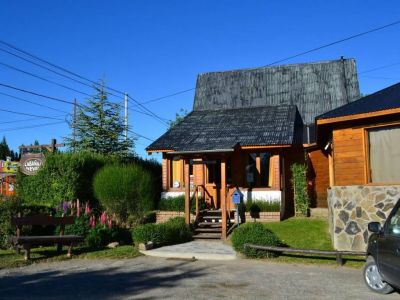An important archeological site where the first cave paintings in the province were found lies a few minutes away from El Calafate: the Walichu Caves.
The best way to reach this place is to head for the city outskirts through Provincial Route 11 up to a sign post that stands on the same side as Lake Argentino and marks the access to the caves.
The Punta Bonita and Walichu Caves are a way to travel back in time. In addition to their archeological value, the amazing beauty of the surrounding scene and the dreamed-of climate are ideal to enjoy the rocky shores of this area of the lake.
A beautiful house with a view of the lake is the meeting point for this original excursion that makes tourists feel interested in anthropology and archeology as they watch a geologic formation of sedimentary rock and the typical steppe vegetation.
The Walichu Caves
Natural caves and eaves used by prehistoric dwellers to express themselves with pictorial representations may be appreciated as we tour along the trail that was specially designed to discover this treasure.
Art in these caves shows what conception of life these primitive peoples used to have and how they communicated with one another. All this represents their legacy for the generations to come.
Francisco Pascasio Moreno, the famous expert, gave the first reference to the existence of these pictures made by the natives at Punta Walichu, where he observed that the cave walls were covered by signs outlined by human hands.
These remarkable pictorial engravings are seen along an interpretation trail where we found ourselves exposed to an impressive culture we discovered at each step.
The materials used by the Paleolithic men –a period whose name derives from their ability to carve stones- include iron oxide and ferrite combined with guanaco fat, plant resin, gypsum, egg white and even human saliva.
Colors are made out neatly: red, ocher, yellow, black and white hues. Techniques included painting with fingers or locks of hair and blowing through hollow guanaco bones.
Pablo Etchevers
Jorge González
